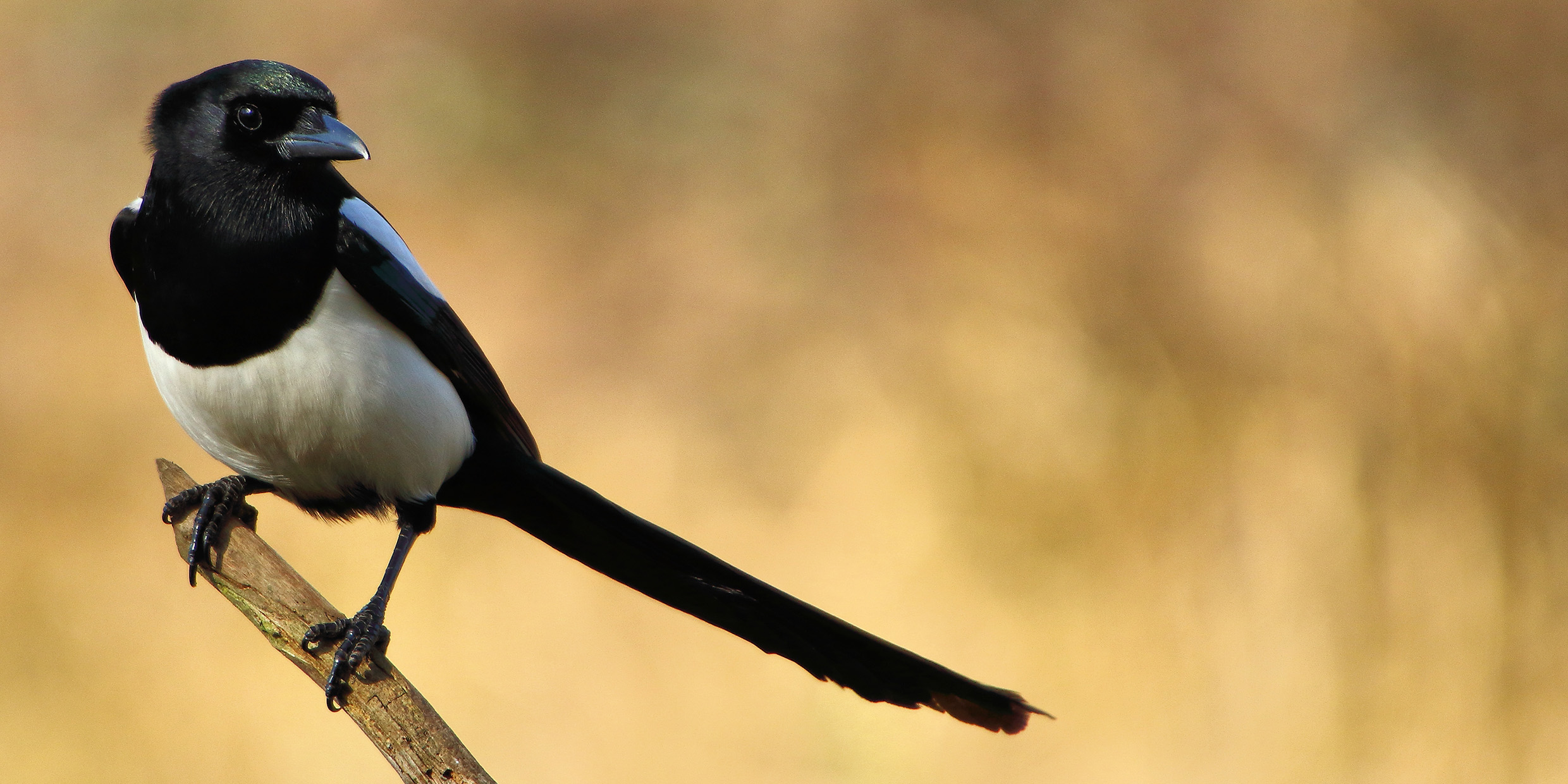Originally published 17 September 1984
For several years now, correspondents to the letters columns of the Irish Times have heatedly debated the merits — or lack of them — of magpies. The magpie is a large black-and-white bird that first appeared in Ireland in the 17th Century and is now proliferating in every part of the country.
The bird’s detractors say the magpie’s success has come at the expense of more desirable song and garden birds. Many letters to the Times have told of magpies stealing eggs from the nests of other species. Some writers have accused magpies of destroying kittens and pet turtles. One correspondent told of a magpie that entered a nursery window and attacked an infant in its cradle — but I find that story hardly credible.
The bird’s supporters fume that all such stories are exaggerations and fabrications, and that the magpie is a beautiful and much maligned “Ariel of the sky.”
My own attitude toward the magpie can be described as neutral. What intrigues me is the degree to which a bird can excite such sustained and contentious debate in a national paper. The Irish, it seems, are firmly attached to their fields and gardens, and watch the intrusions of every creature with keen interest.
Few species
But in fact, there are very few field or garden visitors to watch for. The Irish flora and fauna are among the most impoverished in the world. There are less than 1000 native species of plants; only two-thirds the number of British flora, and a third that of France. The number of animal species is still more severely restricted when compared with Britain or the Continent. There are only three species of amphibia (a newt, a frog and a toad), one species of reptile (a lizard), and a few dozen mammals, most of them small and insignificant. There are no snakes in Ireland, but the blame cannot be laid to St. Patrick.
The reasons for the limited diversity of Irish species are partly ecological, but primarily historical.
Twenty-thousand years ago, at the height of the Ice Age, most of Ireland and Britain were mantled with glaciers. Plants and animals native to the islands before the coming of the ice were displaced southward. Only a few species that adapted to the tundra survived at the glacier’s edges.
With so much water piled on the continents in the form of ice, sea level was lower, and Ireland and Britain were connected to the rest of Europe by land passages. Twelve-thousand years ago the climate moderated and the ice began to melt. Plants and animals re-established themselves in Britain by migration across the land bridge from France, and then moved from Wales to Ireland across the dry floor of the Irish Sea.
The glaciers continued to melt and sea level rose further. The dry passage between Ireland and Wales was submerged about 8000 years ago, although Britain remained attached to Europe for another 2000 years. Britain received from the Continent a steady stream of immigrant plants and animals, but only the earliest or the quickest travelers made it to Ireland before the rising waters cut them off. The snake was among the creatures that arrived in Britain too late to make its way to Ireland.
Human influence
The tight timetable of retreating ice and rising water limited the number of plants and animals that established themselves in post-glacial Ireland. The arrival of humans about 8000 years ago had a further shaping influence.
Perhaps no feature of the present Irish landscape is more distinctive than the virtual absence of woodlands. When the first humans stepped onto Irish soil, the island was covered with extensive forests. The destruction of the native forests can be attributed almost entirely to human intervention: clearing for agriculture, the manufacture of charcoal and the scavenging of domestic fuel.
Human predations caused the reduction or elimination of some animal species. The once common red deer is now confined to parts of Kerry. The last Irish wolf was killed in Carlow in 1786. I frequently climb Mount Eagle on the Dingle Peninsula, but no eagle has been seen there for 100 years.
A few animals and plants not native to post-glacial Ireland have established themselves as neighbors of man. I recently came upon a pair of foxes making their home in the subterranean chambers of an Iron Age ring fort. When the fort was built there were no foxes in Ireland; now the fox thrives on the fringes of human habitation, as a raider of dust bins and rubbish heaps.
The fox and the hedgehog, the rabbit and the hare, the shrew and the mouse: these are the familiar bit players in the Irish countryside. There are so few species of wildlife in Ireland that the comings and goings of each of them are intently noted. Every spring there is a rash of letters to the Irish Times claiming for the authors the distinction of being the first in the land to have heard the call of the returning cuckoo. Ireland has the kind of cozy ecology where magpies and cuckoos easily make their presence felt.



